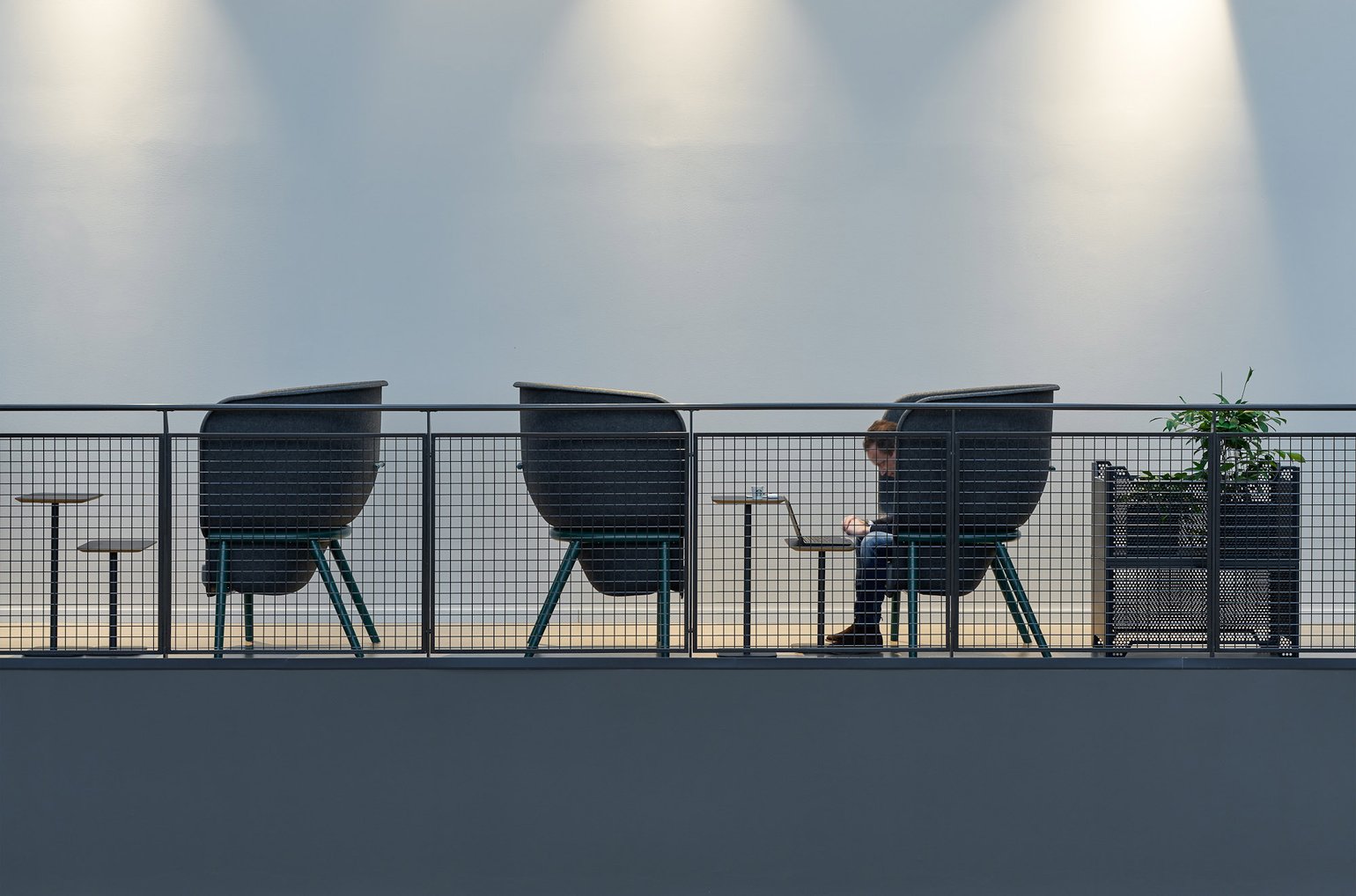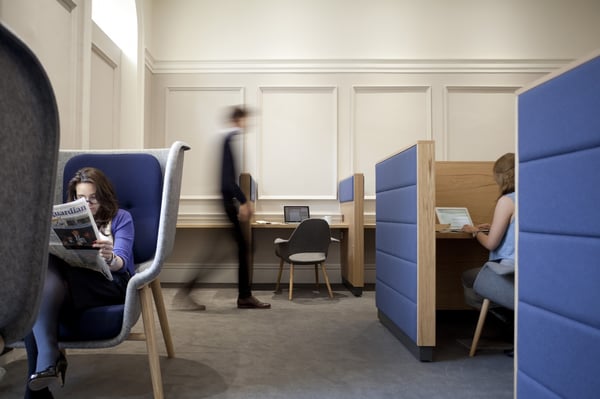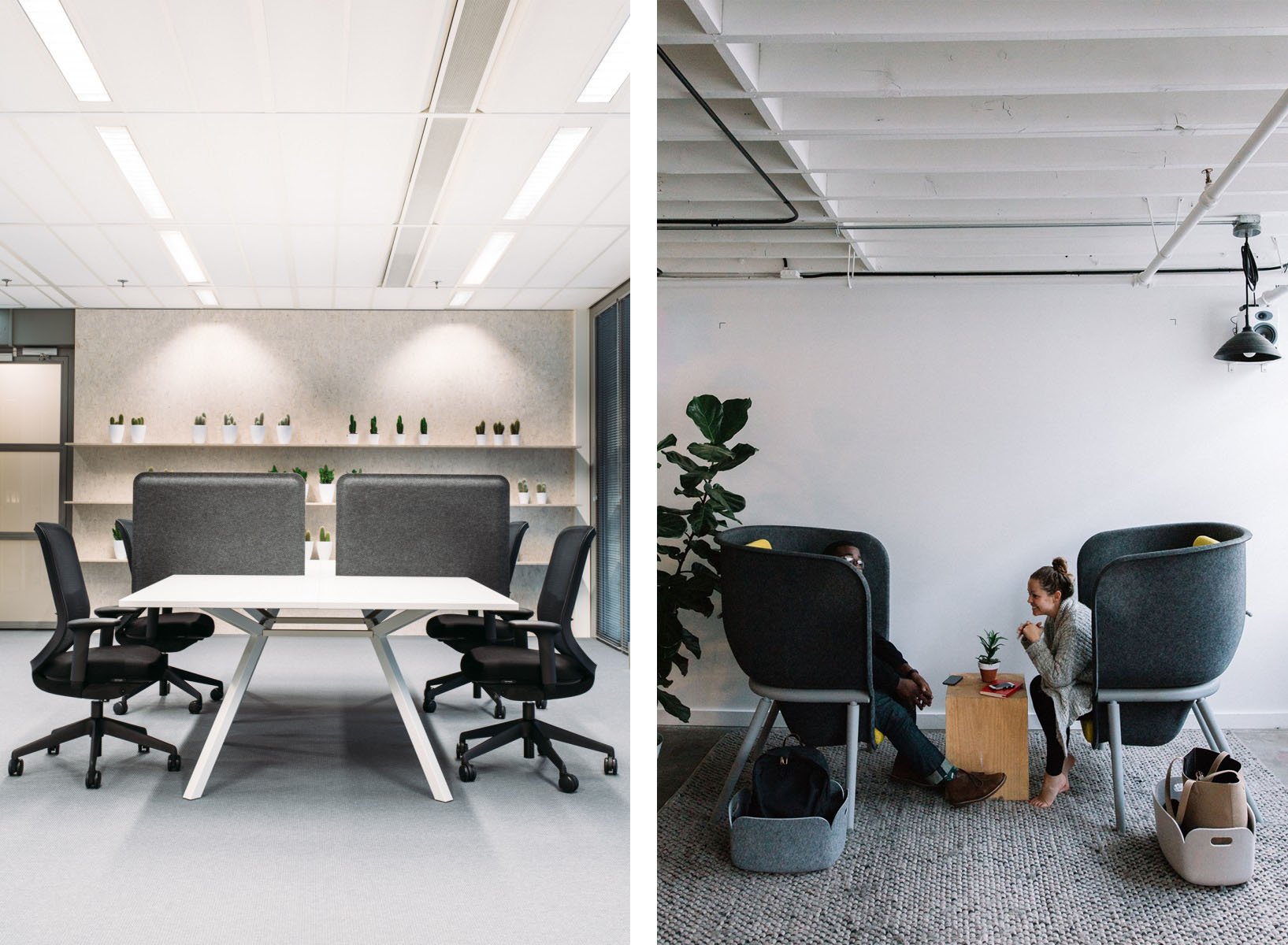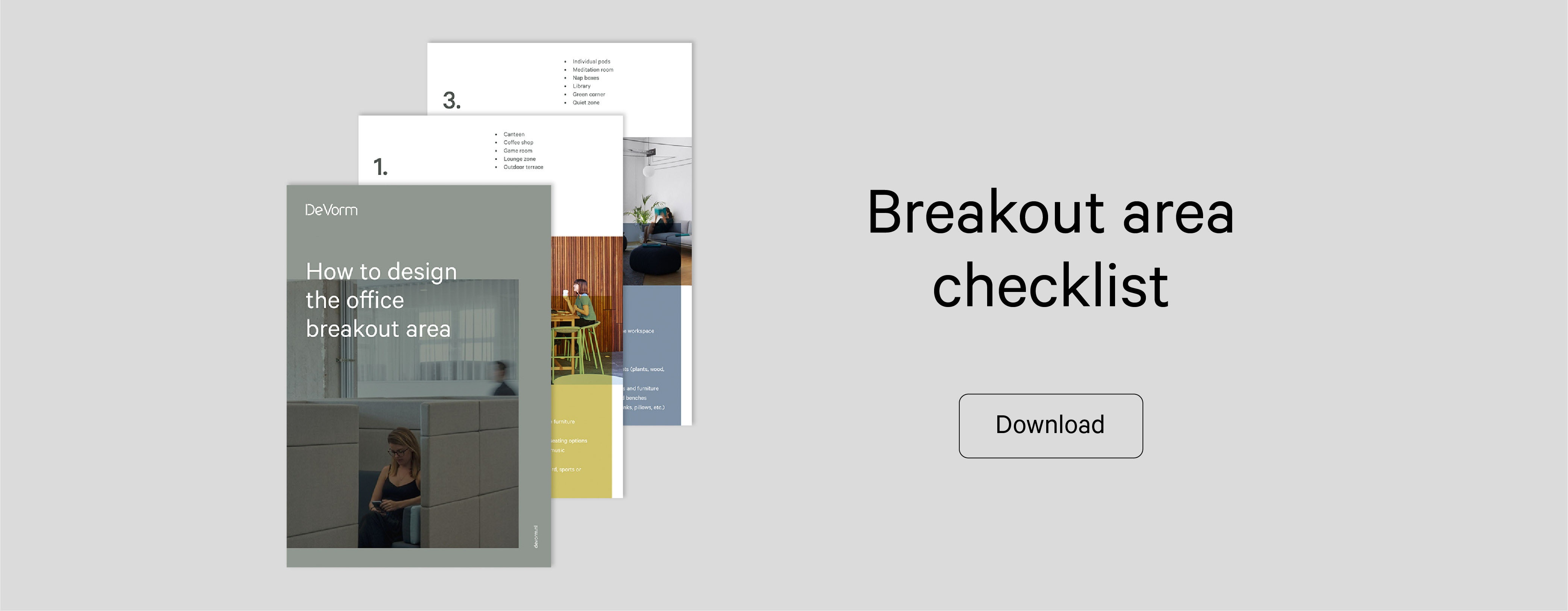Journal
How to Balance Privacy and Collaboration in a Workplace
What is a must-have factor for productive work and creativity? Teamwork and collective brainstorming? Having some time to focus on your own? Or, maybe, both? While almost every modern workplace offers a possibility and room for co-working, the privacy considerations have been recently overlooked. Nowadays, the cost of ignorance has become too high to pay.

On average, employees working in the office get distracted every 11 minutes. After each interruption, it takes our brain about 23 minutes to get back to the concentrated performance.
Simple math brings us to the conclusion that sometimes people don’t even have time to get focused as they are distracted again. Doesn’t sound very productive, right? But getting back to the cubicle where will kill teamwork instead. So, where is the middle way? The workplace design industry has been trying to figure it out for years and luckily there are some insightful suggestions. We’ve collected them here in an attempt to find this mysterious privacy-collaboration balance.
Workplace evolution
The first dedicated office buildings date back to the 18th century. Since then, the workplace has been evolving between the two extremes of privacy and collaboration. However, a 300-year time span appeared to be too short to find a striking balance between these two variables.
While the last decade brought an open-plan office to the forefront, it’s not the first time in history that the “no-wall” layout dominates the workspace. The Taylorist principles, popular in the early 1900s, also promoted the exposed working stations bringing all employees together in one place. But it had nothing to do with collaboration — the focus was on productivity. And the more tables fit into the room, the more efficiently it was used, so having some private space wasn’t a concern at that time. It became one later though, on the wave of growing dissatisfaction with the working conditions. Companies were forced to respond and the office design industry shifted from one extreme to another — the notorious cubicles. Finally, everyone got their long-awaited privacy, but was it better that way? Apparently, not.
By the late ’90s, a growing number of workers was feeling more and more isolated — as many as 50% of employees showed an unsatisfied need for access to their colleagues. “You want it — you get it,” — the change was made back to the open space. More common areas, less room division. However, the trend line went a bit too far towards the collaboration axis, bringing up the never-ending discussion once again.
Open-space office layout has faced lots of criticism — employees now claim that it is distracting and (surprise!) counter-collaborative. How come? The whole idea behind bringing the walls down was to make people interact more. Didn’t work out this time either.
Creating space for both privacy and collaboration
The concept of the open-plan office is not bad in itself. The execution might be poor though. The common misperception is that it should be 100% open, leading to office designs where people feel over-exposed at all times. On the contrary, Harvard Business Review notes that ‘the best collaborative spaces also support solitude’. The publication suggests that work setting should rather resemble an ecosystem of various needs-based areas — open, semi-open and enclosed, — each designed for a particular type of activity.
Such an arrangement is sometimes referred to as a combi-office or flexible office, proven to be more favoured by employees than both cubicle and open layout. Combi offices can be designed in many different ways — the key is to ensure ease of access and proximity to all areas. People are less likely to change their working spot if they have to sign up in advance or go to another floor.
Tips from De Vorm
1. To ensure a balanced mix of solitude and teamwork inside the office, common spaces can incorporate privacy chairs to quickly switch to when having a call or a one-to-one talk.
2. Large shared tables, used for meetings and brainstorming sessions, can be transformed into individual workstations using special dividers or common objects, like plants and books.
3. You can establish a quiet zone for concentrated work. Using sound-dampening materials in such areas, like will minimize distractions and support focus.
Privacy and collaboration within the mentioned spaces can further be facilitated by the unassigned seating setup. It encourages interaction with non-team members and allows people to take some time for their own by moving to the shielded stations.
Flexible desk setting also creates an unspoken rule that people in private zones don’t want to be approached at the moment, while those staying in the common areas are open for a small talk. A great way to minimize the distractions and foster the exchange of ideas at the same time — seems like we're getting to this magic balance point.
Is it all about workplace design?
It’s not only the office layout that defines employee experience. Culture plays a crucial role here as well. Both corporate culture and the values inherent in the society.
If the workplace is calibrated for flexibility, but changing your seat throughout the day is not welcomed in the company, the concept will never work. A similar issue was observed during the experiment conducted by the Nottingham Trent University:
When placed in an open office setting, employees still refused to switch to the isolated workstations, even while performing high-concentration tasks. Apart from inconveniences like moving their stuff or not having portable hardware, the main reason was the concern that a change of seat would be wrongly interpreted by their colleagues.
Another factor to consider is cultural differences. As Steelcase research shows, only 55% of Western employees indicated that they can work in groups without being interrupted. In China and India, though, employees rated their workplace high in terms of concentration and lack of distractors, even though they have much less private space per capita, compared to Western companies. So, privacy is a highly subjective metric.
It also varies among different personalities. For some people, background music in the office is relaxing, while others are annoyed by it. Even the same factor can be perceived differently by a person, depending on the situation. Normally, indistinct chatter isn’t a big issue. But when you are working on a task requiring extra concentration, even slight noise can be distracting.
Key to privacy-collaboration balance
Office design is only the first step in striking a balance between privacy and collaboration. It has to be supported by relevant protocols and values, clear for everyone and followed by everyone. And the key to success here is to give your employees freedom of choice. Since there is no universal answer to the “privacy-collaboration” equation, let people solve it for themselves.
Empowering your team to choose the preferred spots and switch them depending on the type of work is probably the most efficient way to strike a balance for all.
Diversity is also important here. Providing different types of spaces, both enclosed and open, and making them accessible to everyone is key to solving the privacy-collaboration equation. You can also think of multi-purpose spots, such as breakout areas. These versatile zones will grant privacy when people need it. At the same time, it's where ideas can be discussed in an informal atmosphere. Get started with our free checklist for designing a breakout area.






